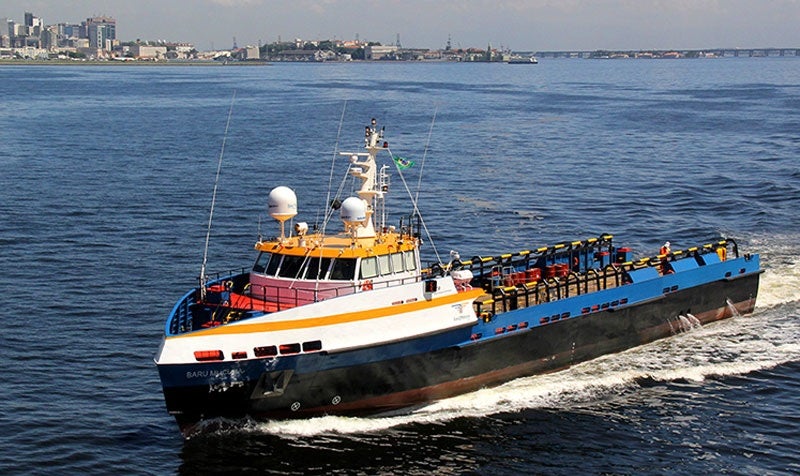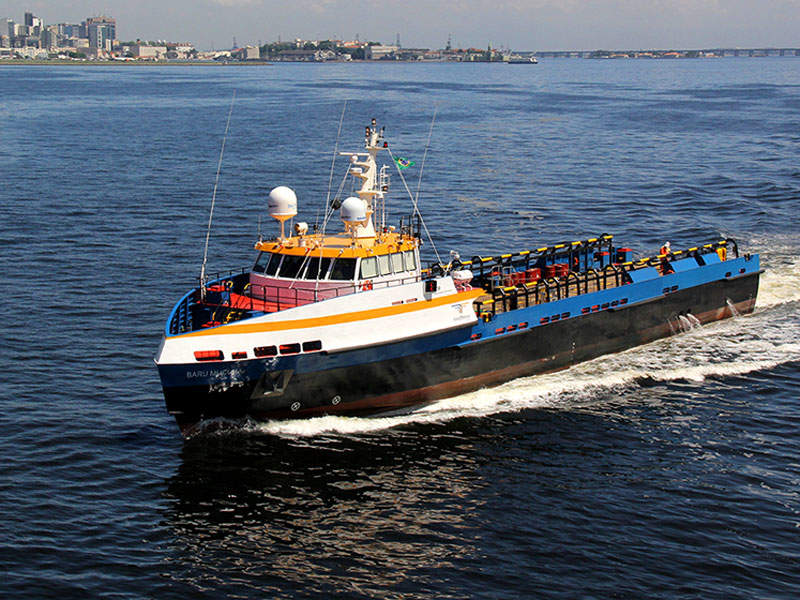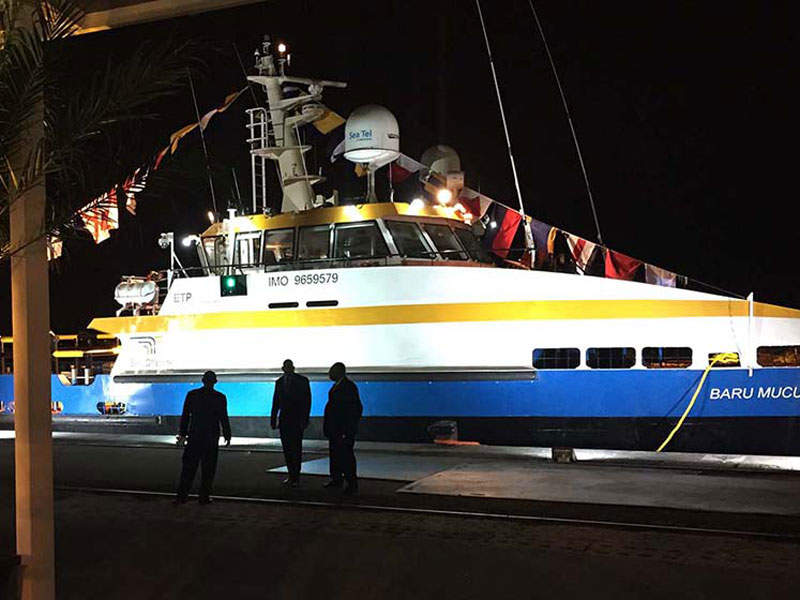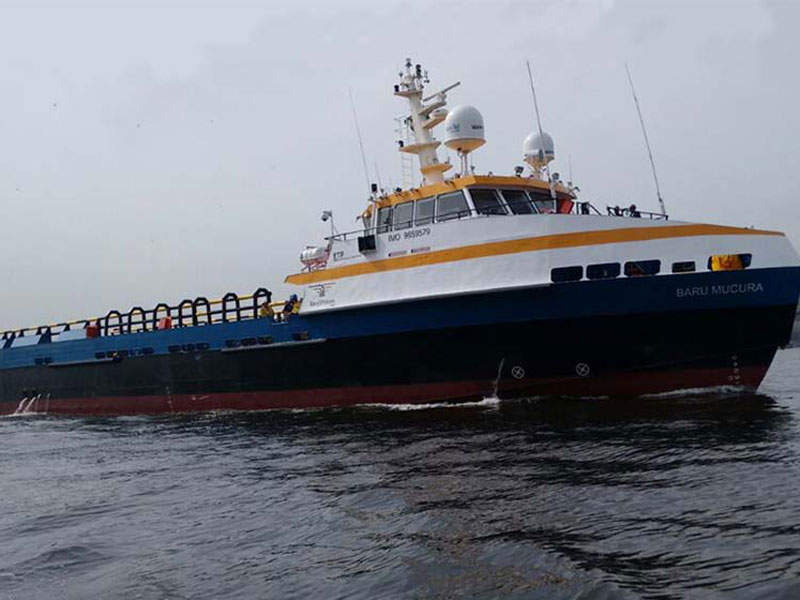
Baru Gorgona-class is a fleet of 12 fast supply vessels built by ETP Engenharia in Rio de Janeiro, Brazil, for Intertug subsidiary Baru Offshore to support the operations of Brazilian state-owned oil company Petrobras.
The vessels are designed by Australian naval architecture and engineering services provider Incat Crowther, in order to meet the UT 4000 (utility tug boat) fast supply vessel requirements of Petrobras.
Under an eight-year charter agreement with Petrobras, Baru Offshore will operate the ships, which will be used to transport personnel, food, water, fuel, and medical equipment to oil and gas exploration and production activities, mainly in the Campos and Santos basins in Brazil.
Construction and delivery of Baru Gorgona-class ships
Funding for the design and construction of the Baru Gorgona-class ships was provided by the Merchant Marine Fund (FMM) Funding, which is managed by the Brazilian Ministry of Transport. The design contract was awarded to Incat Crowther in April 2012.
The fast supply ships (hull numbers C 032 to C 043) include Baru Gorgona, Baru Macura, Baru Providencia, Baru Antares, Baru Atria, Baru Serrana, Baru Tesoro, Baru Sinu, Baru Orion, Baru Sirius, Baru Taurus, and Baru Vega.
The lead ship in the series, Baru Gorgona, was launched in June 2014, while the second vessel was delivered in February 2015. Baru Offshore took delivery of third and fourth vessels in November 2015.
The sixth and seventh ships were delivered in January and April 2016 respectively, followed by the commissioning of the ninth vessel in the series, Baru Orion, in July 2016. The last three vessels in the class were delivered in March 2017.
Baru Gorgona-class design and capacities
Marine-grade aluminium alloys are used in the construction of the Baru Gorgona-class supply vessels. The ships have a monohull structure designed in accordance with level 1 DP (dynamic positioning) standard set by DNV GL classification society.
Each vessel has an overall length of 48m, a waterline length of 46.1m, a beam of 9.5m, a moulded depth of 4.25m, and deadweight of 350t. Its hull draught is 1.7m, while the maximum draught is 2.1m.
It can carry 44,600l of ship fuel, 90,600l of cargo fuel, 9,000l of ship’s freshwater, and 91,000l of cargo freshwater.
Features of the fast supply vessels
The main deck cabin features a 30m² cargo area to accommodate either 60 offshore personnel or cargo, including medical supplies, food, small tools and other equipment. It is also installed with wet room and laundry facilities.
The upper deck of the Baru Gorgona-class vessel incorporates a wheelhouse with a control station at the aft end to enable safe operation at sea.
Up to 11 crew members can be seated in six cabins situated on the lower deck of the vessel. The lower deck also houses mess, galley and bathrooms.
An expansive cargo deck covering 225m² of usable area is located at the aft of the vessel to house 250t of cargo. Featuring a maximum load capacity of 3t/m², the cargo deck is lined with hardwood and protected by study cargo rails.
Sensors onboard Baru Gorgona-class fast supply vessels
The supply ships incorporate advanced navigation, satellite communications and electronics systems supplied by Waypoint Brasil. They include marine radar, echo sounder, chart plotter, sonar, and global positioning system.
Propulsion and performance
Driven by four V-type, four-stroke, 16-cylinder Cummins QSK50 diesel engines, the Baru Gorgona-class offers a service speed of 21k and a top speed of 25k. Each engine develops an output power of 1,800hp at 1,800rpm.
The propulsion system also includes a pair of 280ekW Cummins QSM11 marine generator sets, two 150hp Thrustmaster electric tunnel bow thrusters and four fixed-pitch propellers.







